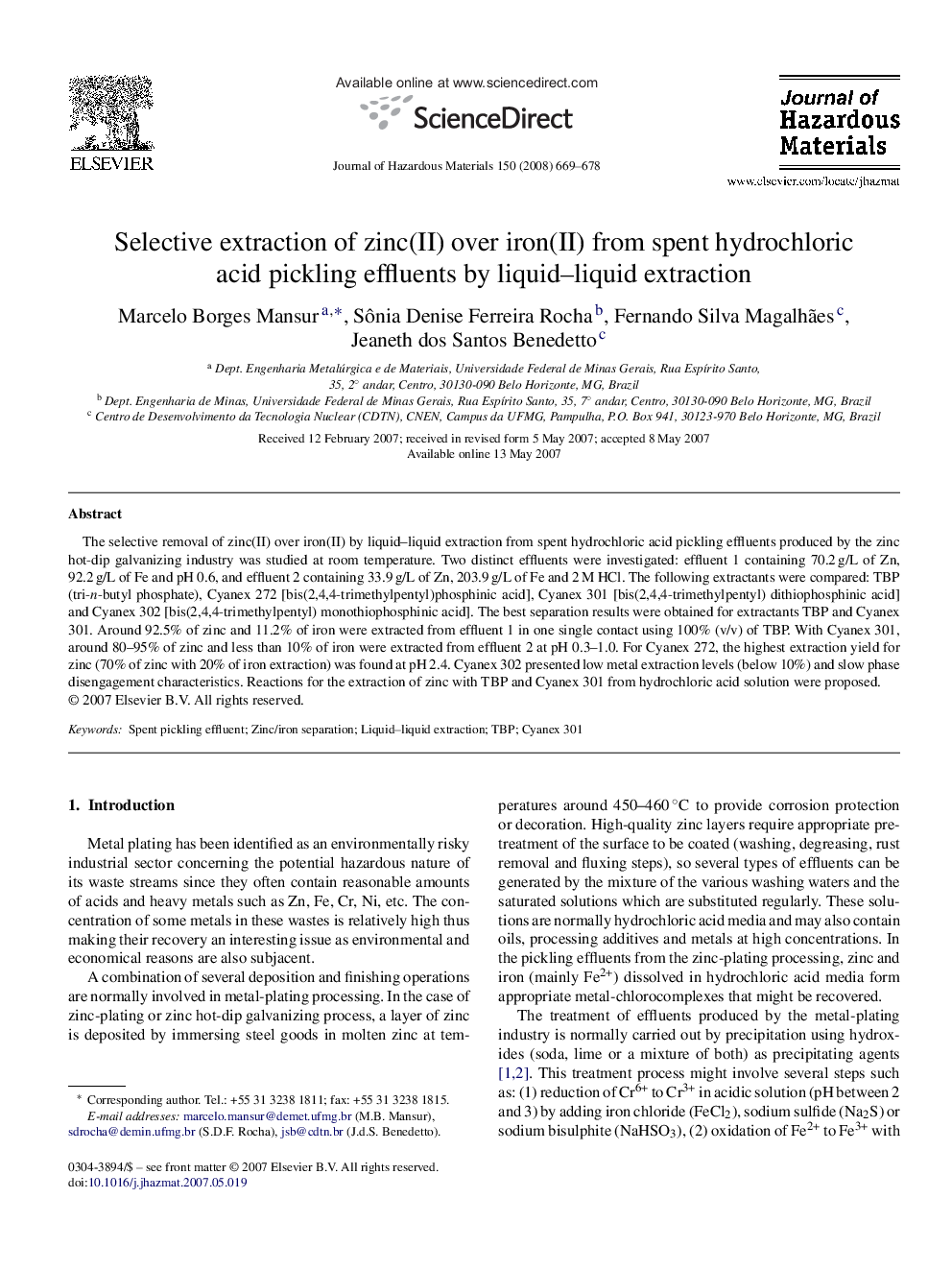| Article ID | Journal | Published Year | Pages | File Type |
|---|---|---|---|---|
| 583684 | Journal of Hazardous Materials | 2008 | 10 Pages |
Abstract
The selective removal of zinc(II) over iron(II) by liquid-liquid extraction from spent hydrochloric acid pickling effluents produced by the zinc hot-dip galvanizing industry was studied at room temperature. Two distinct effluents were investigated: effluent 1 containing 70.2Â g/L of Zn, 92.2Â g/L of Fe and pH 0.6, and effluent 2 containing 33.9Â g/L of Zn, 203.9Â g/L of Fe and 2Â M HCl. The following extractants were compared: TBP (tri-n-butyl phosphate), Cyanex 272 [bis(2,4,4-trimethylpentyl)phosphinic acid], Cyanex 301 [bis(2,4,4-trimethylpentyl) dithiophosphinic acid] and Cyanex 302 [bis(2,4,4-trimethylpentyl) monothiophosphinic acid]. The best separation results were obtained for extractants TBP and Cyanex 301. Around 92.5% of zinc and 11.2% of iron were extracted from effluent 1 in one single contact using 100% (v/v) of TBP. With Cyanex 301, around 80-95% of zinc and less than 10% of iron were extracted from effluent 2 at pH 0.3-1.0. For Cyanex 272, the highest extraction yield for zinc (70% of zinc with 20% of iron extraction) was found at pH 2.4. Cyanex 302 presented low metal extraction levels (below 10%) and slow phase disengagement characteristics. Reactions for the extraction of zinc with TBP and Cyanex 301 from hydrochloric acid solution were proposed.
Related Topics
Physical Sciences and Engineering
Chemical Engineering
Chemical Health and Safety
Authors
Marcelo Borges Mansur, Sônia Denise Ferreira Rocha, Fernando Silva Magalhães, Jeaneth dos Santos Benedetto,
